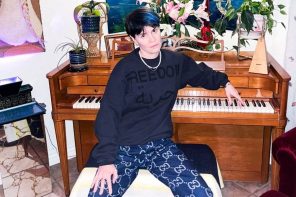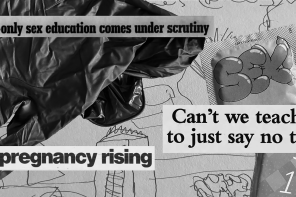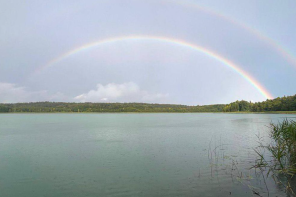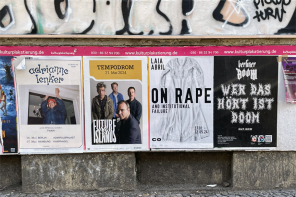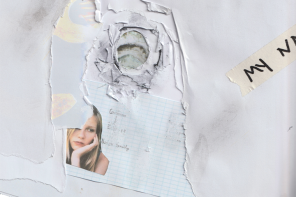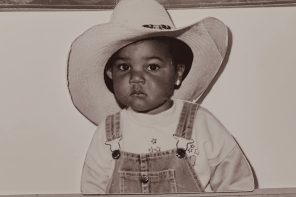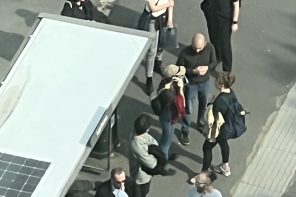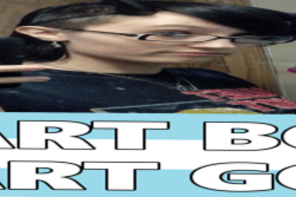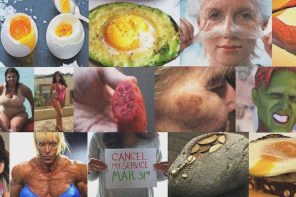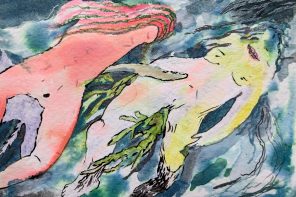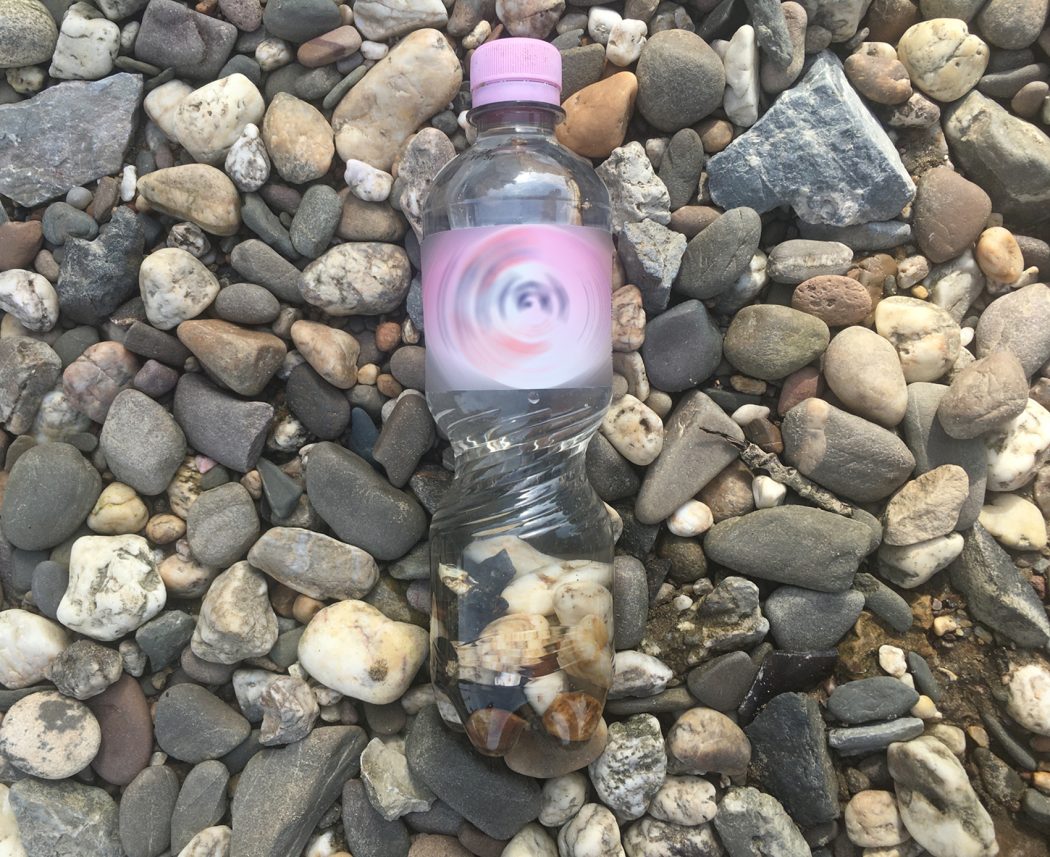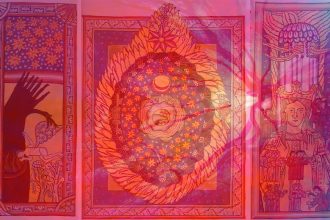Audio transcription:
Coming from Bogotá, a previous swamp which was dried out in colonial times, I didn’t grow up with a body of water close to me. The Pacific and Atlantic Oceans were around 10 and 13 hours away from where I lived. I wasn’t taught the names or locations of the rivers around me, and the only information I received concerning them was related to how polluted the Bogotá river already was. Nevertheless, in the past years I have been learning from – and enjoying with – bodies of water both in the South American and European regions. Arzobispo, Pance, Spree, and Rhine rivers are fluvial channels that live within me, channels that I hold affection for. This is where I speak from.
In the past five years, water has made its way as a research subject in my artistic investigations and we have been collaborating through different contexts and approaches. One of them, which gives title to this text, is a research frame developed together with academic scholar Elizabeth Gallón Droste throughout 2020-2021. We have been weaving the concept of Aqualiteracies, a term we started to define as:
The recognition of the caring relationships with water as a living being, in all states, phases and rhythms. Aqualiteracy involves the understanding of the mutual affective relations in water practices, in dialogue to its transformations through time, in everyday life and environments in relationship to our own bodies. Furthermore, aqualiteracy entails the capacity to feel-think and imagine with water and to receive and decode the information that water contains.
Aqualiteracy is a term inspired in Bonaventure Soh Bejeng Ndikung’s concept of Corpoliteracy, which he describes as, “an effort to contextualize the body as a platform, stage, site, and medium of learning, a structure or organ that acquires, stores, and disseminates knowledge.” Like Corpoloteracy, Aqualiteracy, is the ability to read bodies, in this case, bodies of water. Through the following thoughts, I would like to expand this term in a tentacular and porous way, so that it can further be nourished by situated responses.
Aqualiteracy involves understanding water as a data carrier. It involves recognizing water as an heterogenous and relational element, in constant interactivity and exchange with different environments. It entails interpreting its chemistry and its physical properties in relation to those of the surroundings. From temperature, tone, and acidity, to current, course, and sediment, water can be a container of complex information. What does a certain tone of a river imply? What happens when water is stagnated or when it is merged with oil? What is drinkable lime water telling us about the pipelines and infrastructures of the urban sites we inhabit? As environmental activist Felipe Medina mentions: “water is always connecting parts to each other, fostering the type of interdependence needed for life to happen.” Water provides key data and information about the interrelationship of elements in our most immediate surroundings.

There are fresh, salty and hybrid bodies of water in the shape of rivers, creeks, ponds, lakes, lagoons, aquifers, deltas, estuaries, gulfs, seas, and oceans, amongst others. Within the diversity of bodies of water, there is also a variety of waters in our bodies; for instance, the 60% of our body which is made up of water, manifests through sweat, pee, lymph, and saliva. Aqualiteracies involves understanding there’s a constant dialogue from body to body – from our waters to other waters, in constant flow and through different strategies or approaches. In fact, by drinking fresh water and sweating it / or releasing it as a salty substance full of nutrients through our pee, it can be said we absorb rivers and release oceans. In this way, our bodies have a similar function to estuaries: they are the porous passages between fresh and salty water, thresholds that process sediments and waste, and fertile spaces that foster life. We can learn about our bodies through observing bodies of water, and vice versa.
Additionally to providing information about our most immediate environments and our bodies, water also carries knowledge and stories of other temporalities. The waters of the present have been circulating through other bodies and environments of the past and will continue going through bodies of the present and future. Aqualiteracy involves learning how to listen, think-feel, sense, and decodify this information. In this way, water serves as a communication device in which it is both a message and channel we can actively listen to.
Aqualiteracy involves the acknowledgement of situated responses in the dealing and caring of water from site-specific conditions. The way the swampy surface of Bogotá was dried out in colonial times and cracks every year when the rainy season arrives, or how the floor of Berlin, another swamp, is held together by cubic stones which allow water to permeate while maintaining certain stability, gives us clues on the diversity of strategies that exist to administrate water. If we examine how Saudi Arabia has been implementing cloud-seeding to increase rainfall in order to tackle their water scarcity, or the state of Chiapas in Mexico, where Coca-cola has absorbed the water sources and as an aftermath, there is no more water to drink – there is coke instead – we can understand that the management of water is always contextual and political.
Water is both a data carrier and a complex tissue of memories in hybrid temporalities which can also be conceived as a surface of human projections and belief systems. What belief systems are behind our relationship with water? The fact that the Atrato river in Colombia and The Whanganui River in New Zealand have acquired the status of legal persons evidences other worldviews around environmental bodies. According to the worldview of the Wayuu community in Northern Colombia, the world was created by a romance between the Rain and the Earth. There are many Muiscan myths, in precolonial Bacatá/Bogotá, which featured a whole cosmology that paid tribute to water. All these mythological systems allow us to unveil other kinds of cosmovisions and water practices.
After growing distant to bodies of water, I have reconnected with water through sensing it – feeling in my body its vibrating freshness while I bathed in waterfalls in northern Colombia, or by witnessing the pollution of some water sources with glisophate in the southern region of Putumayo, or while observing the waters of the Spree being stunningly flashed by the winter sun in Berlin. Aqualiteracies is a lexicon in flux that emerges from sensitive experiences and direct exchange with water. Therefore, it remains a live research frame that might grow or de-grow in response and receptivity to a variety of circumstances and contexts in which water, through different bodies, will be the source of information.
Soh Bejeng, Bonaventure. 2020. In a While or Two We Will Find The Right Tone. Berlin: Archive Books.
Medina, Felipe. 2020. Water :: An Organizing Principle for Peace. Earth Regeneration Fund.
Words and Images by Daniela Medina Poch
Daniela Medina Poch (she, her) –Bogotá, Colombia, currently Berlin, Germany– is a visual artist, writer and researcher whose work addresses the intertwining of “tierra”, a term that encompases the dimensions of earth, land and soil at the same time. From a research-based practice and through poetic strategies, her work aims to question hegemonic discourses that perpetuate asymmetrical power relations. Her work has been part of exhibitions and projects such as The Listening Biennial (Berlin), Transmediale 2020 (Berlin), FLORA ars+natura, (Bogotá), Lugar a dudas (Cali), LowTechLab (London) and LOOP Festival (Barcelona), amongst others. Daniela is co-founder of Babel Media Art, Bogotá and Co–Re, Haus der Statistik, Berlin. Currently she participates in the Kunst im Kontext MA program at Universität der Künste Berlin.
